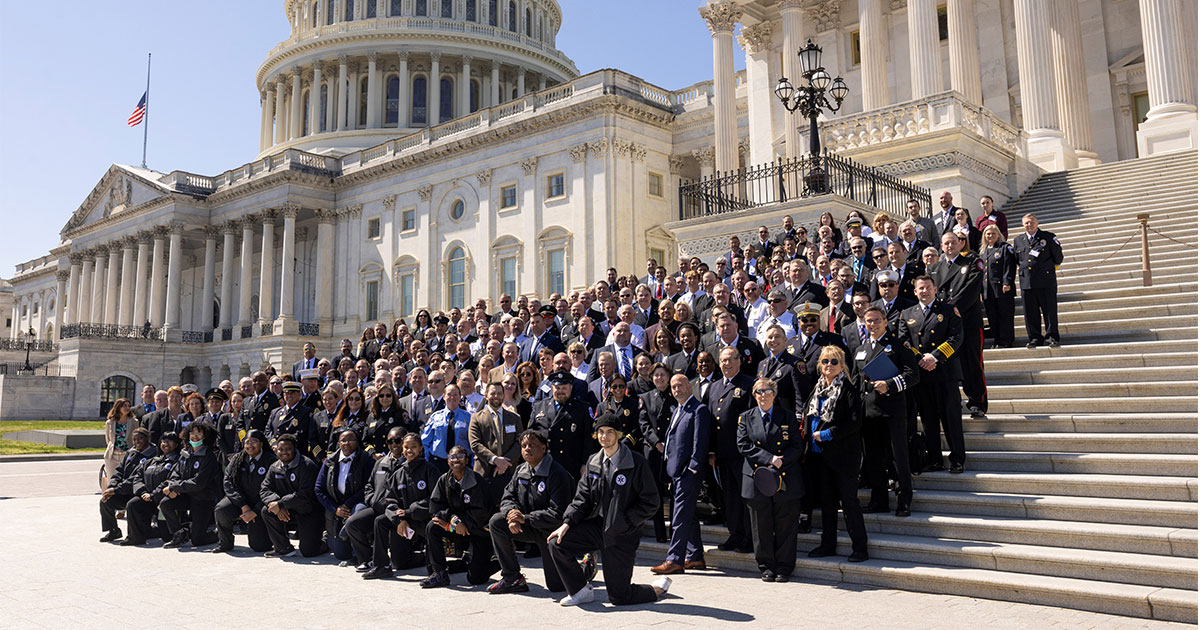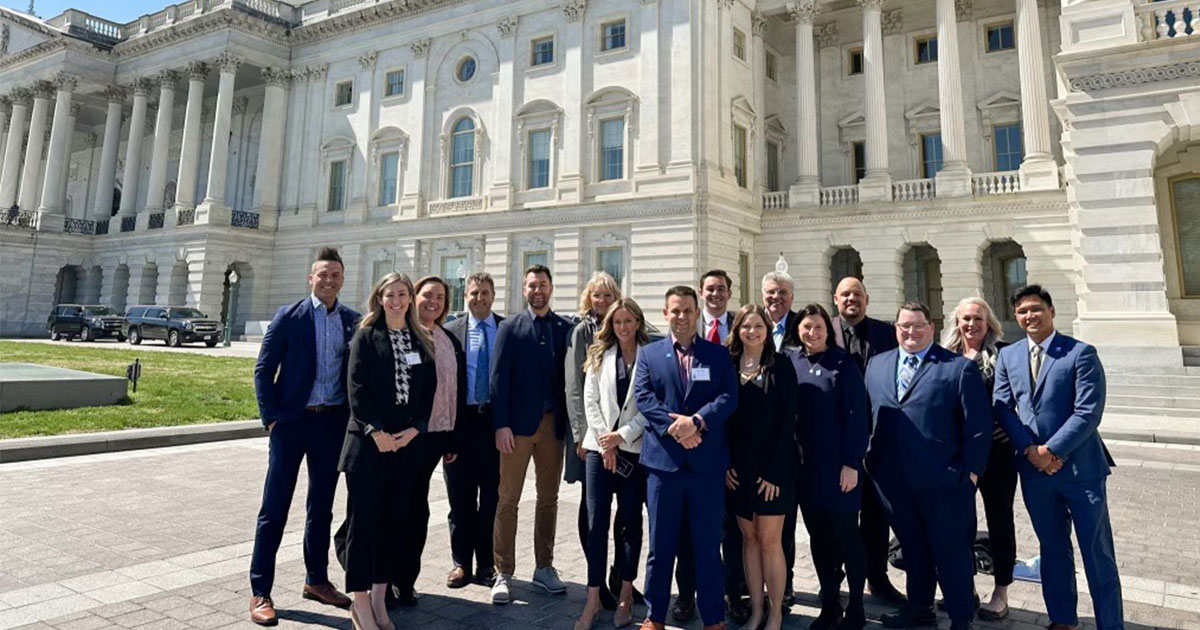Medline advocates for EMS reimbursement, workforce shortage solutions

By Medline Newsroom Staff | April 12, 2023
The upcoming end to the COVID-19 Public Health Emergency (PHE) in May is expected to cause sweeping changes across the continuum of healthcare. For emergency medical services (EMS) providers, these changes include the end of Treatment in Place and Transport to Alternate Destination reimbursement programs.
During the pandemic, EMS often provided on-site treatment and care, instead of transporting patients to local hospitals, to keep hospital beds available for more seriously ill patients. With the end of PHE, reimbursement for both programs, which reimbursed EMS agencies for on-site care and care to alternate destinations, will end.
On March 29th and 30th, 16 Medline advocates joined EMS professionals in Washington, for EMS On The Hill Day, sponsored by the National Association of Emergency Medical Technicians (NAEMT), to advocate for the needs of patients, EMS workers and providers.
“It is through our collective voice that we can help our elected leaders understand the vital role of EMS in healthcare, disaster response, and public health emergencies.”

Susan Bailey
NAEMT President
“Medline is proud to be a Capitol Sponsor of the event this year to advocate for important initiatives impacting the operations of EMS providers,” said Rhonda Baliff, Medline division sales manager, EMS. “The pandemic elevated the role of EMS, allowing them to provide high quality care without transporting patients to the hospital. It is important that we advocate for continued reimbursement for this vital care that can help reduce hospital admissions.”
“NAEMT greatly appreciates and values Medline’s participation in EMS On The Hill Day actively advocating on behalf of EMS and the patients and communities we serve,” said Susan Bailey, NAEMT president. “It is through our collective voice that we can help our elected leaders understand the vital role of EMS in healthcare, disaster response, and public health emergencies.”
While the Treatment in Place program was a timely discussion topic with Congressional leaders, other issues EMS Day on the Hill participants advocated for to help keep the segment healthy included the Hospital Preparedness Program the EMS Counts Act of 2023, and supporting improving rural EMS needs through the SIREN Act.
Extending reimbursement programs
EMS On the Hill Day participants asked Congress to extend the Centers for Medicare & Medicaid Services (CMS) authorized waivers allowing EMS agencies to be reimbursed for Treatment in Place and Transport to Alternate Destination programs. These reimbursements:
- Shorten task times for agencies struggling with workforce shortages and help decompress busy hospitals. Currently, many hospitals hold EMS personnel for hours waiting for an available bed in the emergency department, which limits EMS resources available to the community.
- Support patient-centric care for patients who access healthcare through the 9-1-1 system by providing treatment on-scene along with effective navigation and transport when needed to the most appropriate healthcare destination without enduring a financial penalty by doing so. The current EMS economic model incentivizes transport to an emergency department.
- Save both hospital and EMS resources, both of which are in short supply.

The Medline team at EMS On The Hill Day
Saving the EMS Workforce
Another initiative EMS On the Hill Day participants advocated for is Saving the EMS Workforce, one way to do this is through the expansion of the Hospital Preparedness Program. This helps provide leadership and funding to states and municipalities to improve the capacity of the healthcare system to plan for and respond to large-scale emergencies and disasters. NAEMT recommends an expansion of this program, authorized by the Pandemic and All Hazard Preparedness Act (PAHPA), to specifically provide a $50 million grant to fund the EMS Preparedness and Response Workforce Shortage Program. These funds would support recruitment, retention, and training of EMS personnel including tuition and associated expenses for paramedic and EMT training courses; expenses for required continuing education courses; and costs related to licensure and certification. The grants could also support apprenticeship programs for paramedics and emergency medical technicians. Currently, there are no federal grant programs to support EMS apprenticeships.
Learn what Medline is doing to help prepare EMS workers to take on daily challenges.
Medline Newsroom Staff
Medline Newsroom Staff
Medline's newsroom staff researches and reports on the latest news and trends in healthcare.

